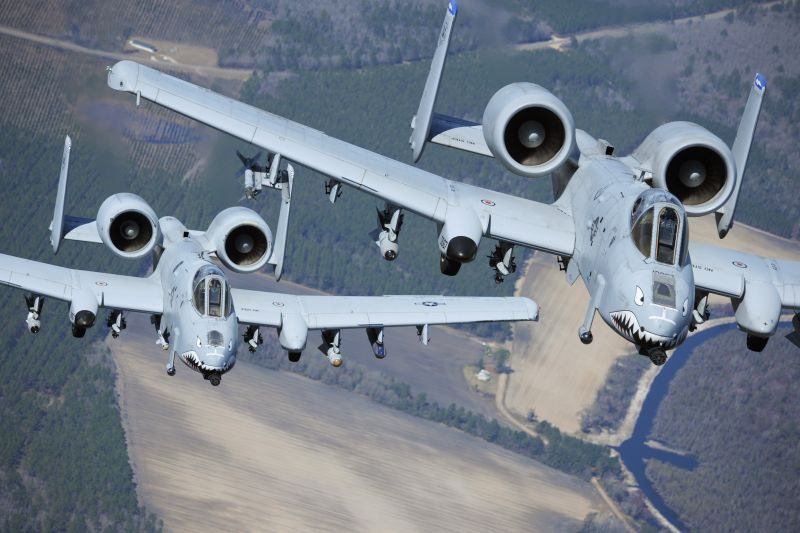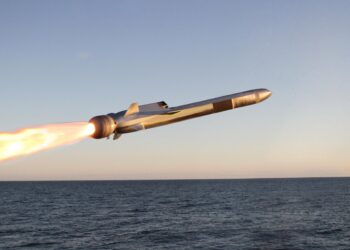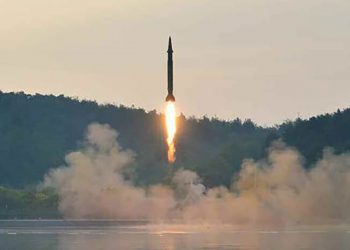The 40th Flight Test Squadron completed another first in February when an A-10 Thunderbolt II fired a guided rocket that impacted only inches away from its intended target.
The 2.75 diameter, 35-pound, laser-guided rocket is known as the fixed-wing Advanced Precision Kill Weapon System II. Before the Thunderbolt test, the rocket had proved effective in Afghanistan combat operations when fired from Marine helicopters.
“Rockets are a staple close air support weapon, but their weakness has always been their poor accuracy when shot at range,” said Maj. Travis Burton, the 40th FTS A-10 pilot who performed the APKWS tests. “In improving rocket accuracy by several orders of magnitude, the APKWS makes the rocket a better weapon for today’s low intensity conflicts, where minimizing collateral damage is a top priority.”
The test squadron performed three sorties to demonstrate the capability and ensure the rocket could be fired safely from a fixed wing aircraft – a test that had never been accomplished before.
The first sortie tested whether aircraft flight would be impacted by carrying the rocket and launcher. During the second sortie, the A-10 fired an unguided inert rocket to ensure the weapon would separate from the aircraft without any issues. For the final sortie, two armed, guided rockets were fired at a surface target at altitudes of 10,000 and 15,000 feet. The last APKWS shot was fired into a 70-knot headwind and impacted the target within the two-meter requirement specifications.
“The 70-knot headwind didn’t allow us to accomplish the second guided shot using the planned delivery parameters, so the test team [myself, the chase pilot, the controllers and engineers] worked real-time to adjust those parameters in a manner that would still accomplish the test objective,” said Burton. “In any scenario other than test, we would have adjusted the run-in direction to change the headwind to tailwind, or a crosswind.”
Both shots were considered successful, but the accuracy of the APKWS made a real impression on the project manager, Joe Stromsness.
“We watched real-time video of the test at the central control facility when the rocket hit within inches of the laser spot,” he said. “Everyone was ecstatic and high-fived each other. Many hours of work from the Navy, Air Force and the BAE contractor team went into the success of this test. This was a major milestone in moving forward to the next phase. ”
With the developmental test stage completed, the project will move to operational testing at China Lake Test Range, Calif., with the Air National Guard, Air Force Reserve Command Test Center. In May, Air Force pilots will fire 22 APKWSs from the A-10 and F-16 at both moving and stationary targets.
With another positive outcome in May, Stromsness sees huge potential for the APKWS.
“This is a lighter weapon with a smaller warhead that can potentially minimize collateral damage,” he said. “We’ve added precision guidance; and based on our tests, we’re within inches of the intended target. We don’t have a precision weapon out there now that can do that.”
According to BAE Systems, the weapon’s manufacturer, the APKWS is one-third the weight and cost of other precision rockets in the DOD inventory. The aircraft could potentially transport seven rockets per launcher and carry two launchers due to the APKWS’s relatively small size and weight.
Burton agrees with Stromsness about APKWS’s potential benefit to the warfighter.
“By improving rocket accuracy, the APKWS II gives the pilot the capability to achieve the desired weapons effect with a single rocket,” said Burton. “Not only does this increase the lethality of any aircraft carrying rockets on a given day, it also allows the aircraft to do so at a greater range. This keeps the aircraft farther away from the surface-to-air threats typically found in a target area.”
Moving the APKWS to a fixed-wing aircraft began as an urgent operational need project for the Navy and Air Force in 2009. The tasking, called a joint concept technology demonstration, was to take the rotary-wing version of the rocket and modify it for fast-moving aircraft. The goal for the Air Force was to demonstrate it on the A-10 and the F-16 if possible, according to Stromsness. The Navy would test it on the AV-8B and F/A-18.
Eglin’s 96th Seek Eagle office worked with the APKWS team to obtain flight clearance for both aircraft so the developmental testing could begin.
An initial hurdle Stromsness and the test team discovered was the guidance section added 18 inches to the rocket. This addition caused it to be too long for the standard LAU-131 launcher. The Navy already had a modified launcher to fit the increased length of the rocket, so Stromsness brought those in to perform the tests.
“The great thing about the modified launchers is they can fire the guided and unguided rockets with no problems,” said Stromsness. “If this project moves forward and becomes operational, the better modified launchers will replace the legacy ones on an attrition basis.”
More Air Force testing and assessment will take place throughout 2013. The Navy is just behind the Air Force, successfully firing two APKWSs from an AV-8B, March 27. Once testing is complete, U.S. Central Command will submit a final report and endorsement to the Air Force and Navy program offices. According to Stromsness, if all goes smoothly, the APKWS could be ready for operational use by 2015.










